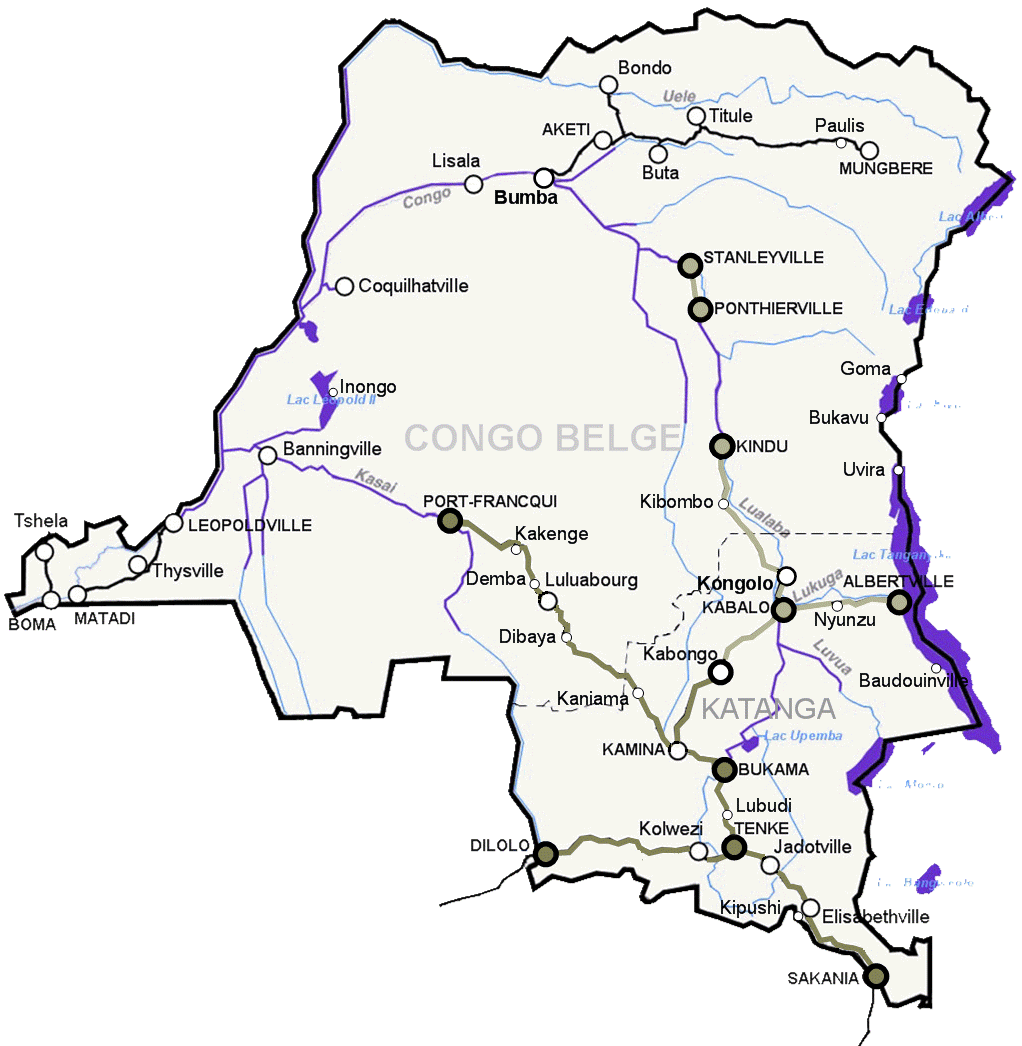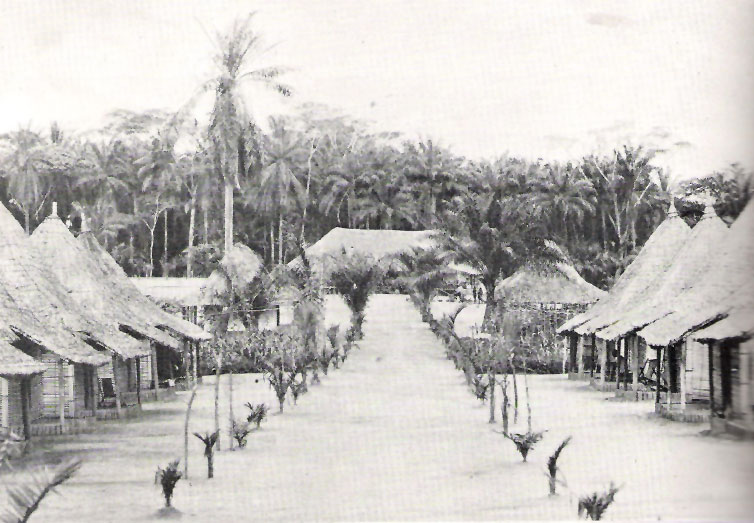|
Andoma, Democratic Republic Of The Congo
Andoma, formerly called Liénart, is a village in the Bas-Uélé province of the Democratic Republic of the Congo. It was a junction on the defunct Vicicongo line, a railway. Location Andoma is in the Bas-Uélé province, Democratic Republic of the Congo. It is to the east of Buta and to the south of Titulé. It is in the Titulé Health Zone. Former railway Andoma was formerly called Liénart after Commander Liénart, who was responsible for the Buta-Andoma section of the Vicicongo railway, and the Andoma-Titulé branch. The section from Buta to Titulé via Andoma (Liénart) opened on 11 November 1932, built by the '' Société des Chemins de Fer Vicinaux du Congo''. Colonel Paulis supervised work on the section from Andoma to Mungbere Mungbere is a small town in Haut-Uele province, in the north of the Democratic Republic of Congo. Transport It was served by the terminal of a now non-operational narrow gauge railway from Bumba, known as the Vicicongo line. See also ... [...More Info...] [...Related Items...] OR: [Wikipedia] [Google] [Baidu] |
Bas-Uélé
Bas-Uélé (French for "Lower Uélé") is one of the 21 new provinces of the Democratic Republic of the Congo created in the 2015 repartitioning. Bas-Uélé, Haut-Uélé, Ituri, and Tshopo provinces are the result of the dismemberment of the former Orientale Province. Bas-Uélé was formed from the Bas-Uele District whose town of Buta was elevated to capital city of the new province. Administration Bas-Uélé lies in the north-east of the DRC on the Uélé River (the French name for the province means "Lower Uélé"). The province includes the following territories: * Aketi *Ango * Bambesa * Bondo * Buta * Poko People Most of the inhabitants of the Bas-Uélé Province, with a population of 900,000 in 2007, are Azandé people. There are others peoples like the Boa, Bakere, Balele, Bakango, Babenza, etc., are also present in this province. They live mainly through subsistence farming and hunting, with some river commerce. Ebola Three people have been reported dead and s ... [...More Info...] [...Related Items...] OR: [Wikipedia] [Google] [Baidu] |
Buta Territory
Buta Territory is a territory in Bas-Uele District, Orientale Province, Democratic Republic of the Congo The Democratic Republic of the Congo (french: République démocratique du Congo (RDC), colloquially "La RDC" ), informally Congo-Kinshasa, DR Congo, the DRC, the DROC, or the Congo, and formerly and also colloquially Zaire, is a country in .... The administrative capital is located at Buta. Geography The territory borders Bondo Territory to the northwest, Bamesa Territory to the northeast and east, Aketi Territory to the west, Basoko Territory to the southwest and Banalia Territory of Orientale Province to the south. Rivers include the Balima River (Democratic Republic of the Congo), Balima River, Tele River, Lemoi River, Rubi River. People The territory contains populations of the Avuru-Mange speaking the Zande language. Subdivisions The territory contains the following Chiefdoms and sectors of the Democratic Republic of the Congo, chiefdoms/sectors: *Barisi-Mongi ... [...More Info...] [...Related Items...] OR: [Wikipedia] [Google] [Baidu] |
Vicicongo Line
Chemins de fer des Uele (Uele Railways or Vicicongo line) is a narrow-gauge line in the north east of the Democratic Republic of the Congo. It was built between 1924 and 1937 as a portage railway bypassing Congo River rapids. Route The line runs from the Congo river port Bumba in Mongala via Lower Uele to Mungbere in Upper Uele with branch lines to Bondo, Buta and Titule city. The total network is long.Durrant, A.E., A.A. Jorgensen, C.P. Lewis. Steam in Africa, London, 1981, Hamlyn. Operationally, the network consists of the following sections: * Bumba–Aketi * Aketi–Bondo * Aketi–Buta–Isiro * Liénart–Titule * Buta–Buta Triangle Town * Isiro–Mungbere History The Uele railways were built 1924–1937 by a Belgian company, the Société des Chemins de Fer Vicinaux du Congo (Vicicongo). The first line ran from Aketi to Bondo and was built from leftover German army stocks used in trench railways or heeresfeldbahnen, which the Belgians acquired after World War ... [...More Info...] [...Related Items...] OR: [Wikipedia] [Google] [Baidu] |
Buta, Democratic Republic Of The Congo
Buta is a city in the northern Democratic Republic of the Congo, lying on the Rubi River, a tributary of the Itimbiri River. It is the capital of Bas-Uele province. As of 2012, it had an estimated population of 55,313. It is home to the Buta Zega Airport. Buta lies on the defunct narrow gauge Vicicongo line built by the '' Société des Chemins de Fer Vicinaux du Congo'' that ran east from Aketi on the Itimbiri River past Buta to Zobia, Isiro and Mungbere Mungbere is a small town in Haut-Uele province, in the north of the Democratic Republic of Congo. Transport It was served by the terminal of a now non-operational narrow gauge railway from Bumba, known as the Vicicongo line. See also * Li .... The line ran from Kotili to Buta and onward to Andoma The line reached Buta on 1 July 1931. A branch line to Titulé via Andoma opened on 11 November 1932. Buta became an operational center for Vicicongo. History In early 2005, the town was the centre of an outbreak o ... [...More Info...] [...Related Items...] OR: [Wikipedia] [Google] [Baidu] |
Titulé
Titulé is a village in the Bas-Uélé province of the Democratic Republic of the Congo. It was the terminus of a branch of the defunct Vicicongo line, a railway. The town is the center of a health zone and has a general referral hospital. Location Titulé is in the Bas-Uélé province, Democratic Republic of the Congo. It is on the N25 road between Buta to the southwest and Bambesa to the east. The Bima River, a left tributary of the Uele River, separates Titulé on the left bank from Mange of the east bank. Titulé is at an elevation of . Colonial era Around November 1890 the Zanzibar Arab Mirambo arrived in the Uele region, starting from a point on the Aruwimi River upstream from Yambuya. Passing the Rubi River he went NNE through Bagbwe and Bayo territory, and installed himself on the Bima near the Titulé post, having obtained the submission of the Bayo people, who supplied auxiliaries to attack the neighbouring people. He threatened the posts in the neighbouring state o ... [...More Info...] [...Related Items...] OR: [Wikipedia] [Google] [Baidu] |
Société Des Chemins De Fer Vicinaux Du Congo
The ''Société des Chemins de Fer Vicinaux du Congo'' (), known as CVC or Vicicongo, was a railway company that operated the narrow gauge Vicicongo line and provided trucking services in the northeast Belgian Congo, and then in the Democratic Republic of the Congo between 1924 and 1974. It provided transport for agricultural goods produced in the northeast that were shipped on the Congo River to Léopoldville (Kinshasa). After independence in 1960 there were civil disturbances and the railway was poorly maintained. The company was taken over by the state in 1974. Later there were further disturbances in which the stations were destroyed and the rolling stock used as a source of metal. The track is decrepit and no longer usable. History Belgian Congo (1924–1960) Background Road traffic along the Uele road began in World War I, organized by ''Messageries automobiles du Congo'' (MACO). By 1919 cotton production was flourishing in the region, and the large producers '' Compagnie ... [...More Info...] [...Related Items...] OR: [Wikipedia] [Google] [Baidu] |
Mungbere
Mungbere is a small town in Haut-Uele province, in the north of the Democratic Republic of Congo. Transport It was served by the terminal of a now non-operational narrow gauge railway from Bumba, known as the Vicicongo line. See also * List of railway stations in the Democratic Republic of the Congo Railway stations in the Democratic Republic of Congo (DR Congo) include: Maps UN Map WestUN Map East* Stations served by passenger trains Stations served by rail Existing Matadi–Kinshasa Railway * Ango-Ango * Matadi * Mpozo ... References External links Mungbere on Openstreetmap Populated places in Haut-Uélé {{DRCongo-geo-stub ... [...More Info...] [...Related Items...] OR: [Wikipedia] [Google] [Baidu] |
Isiro
Isiro (pronounced ) is the capital of Haut-Uele Province in the northeastern part of the Democratic Republic of the Congo. It lies between the equatorial forest and the savannah and its main resource is coffee. Isiro's population is estimated at approximately 182,000. Most people speak, Pa-Zande (Zande language), Lingala, Swahili and which is somehow uncommon. History Isiro was named ''Paulis'' after colonel, later diplomat, Albert Paulis when it was part of the Belgian Congo. The city was developed in 1934 and reached its peak in 1957. Université d'Uélé (in French). Accessed November 4, 2006. In the troubled days of Congo's independence and its aftermath, operation ''Black Dragoon'' brought fighting between Belgian paratroopers and local Simba Rebellion, Si ... [...More Info...] [...Related Items...] OR: [Wikipedia] [Google] [Baidu] |
Zobia, Democratic Republic Of The Congo
Zobia is a village in the Bas-Uélé province of the Democratic Republic of the Congo. Zobia Gauche was a station on the defunct Vicicongo line, a railway. Location Zobia is in the Bas-Uélé province, Democratic Republic of the Congo. It is in the Bambesa Territory. It is on the right side of the Bima River, a left tributary of the Uele River The Uele, also known by the phonetically identical Uélé, Ouélé, or Welle River, is a river in the Democratic Republic of the Congo. Course The Uele forms at Dungu, at the confluence of the Dungu and Kibali rivers, which both originate .... It is on the RP415 road from Titulé to the west to Poko to the east. The village is at an elevation of about . Zobia has a general hospital. As of 2007 the Bambesa diamond trading center was located in Zobia. Colonial era Zobia was an administrative center in the colonial era, seat of Zobia Territory. In 1918 there were three chiefdoms of Makere people in the territory. Former railwa ... [...More Info...] [...Related Items...] OR: [Wikipedia] [Google] [Baidu] |

